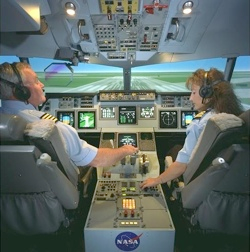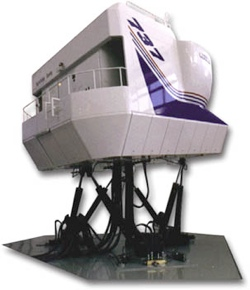What is a Computer Model?
A computer model is a computer program that attempts to simulate a real-life system. In other words, it is a ‘virtual’ version of something in the real-world.
The computer model is designed to behave just like the real-life system. The more accurate the model, the closer it matches real-life.
The computer model is designed to behave just like the real-life system. The more accurate the model, the closer it matches real-life.
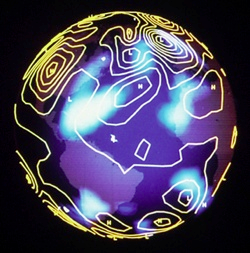
Why Are Computer Models Used?
There are several reasons that computer models are used…
- To test a system without having to create the system for real (Building real-life systems can be expensive, and take a long time)
- To predict what might happen to a system in the future (An accurate model allows us to go forward in virtual time to see what the system will be doing in the future)
- To train people to use a system without putting them at risk (Learning to fly an airplane is very difficult and mistake will be made. In a real plane mistakes could be fatal!)
- To investigate a system in great detail (A model of a system can be zoomed in/out or rotated. Time can be stopped, rewound, etc.)
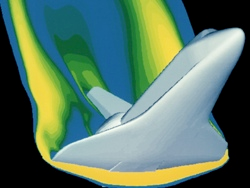

Examples of Computer Modelling
Designing Safer Cars
A computer model of a car can be used to test how safe the design of the car is in a crash.
The virtual car can be crashed over and over again, the effects investigated and the design easily changed until it is as safe as possible.
This is much quicker and cheaper than building and crashing real cars!
The virtual car can be crashed over and over again, the effects investigated and the design easily changed until it is as safe as possible.
This is much quicker and cheaper than building and crashing real cars!
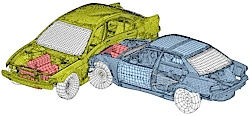
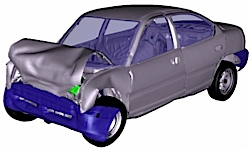
Weather Forecasting
A computer model of a weather system can be used to predict storms.
The wind patterns, temperatures, etc. for the whole planet are simulated using very powerful computers. If the computer model is accurate (it is very difficult to make an accurate model since our planet is rather big) then weather forecasters can use it to ‘fast-forward’ into the future to see a prediction of what the weather will be tomorrow, next week, next month.
(Since weather is so complex, and the models are not (yet) accurate enough, often the weather forecast is wrong!)
The wind patterns, temperatures, etc. for the whole planet are simulated using very powerful computers. If the computer model is accurate (it is very difficult to make an accurate model since our planet is rather big) then weather forecasters can use it to ‘fast-forward’ into the future to see a prediction of what the weather will be tomorrow, next week, next month.
(Since weather is so complex, and the models are not (yet) accurate enough, often the weather forecast is wrong!)

Building Better Bridges
A computer model of a bridge can be used to test the design.
Bridges have to be able to survive extreme weather conditions. It is obvious not practical to build a real bridge and then wait to see if it falls down in a storm. Instead, a computer model of the bridge is created and tested in virtual storms.
If the model breaks, it can be quickly and cheaply re-designed and re-tested. If it doesn’t break, the real bridge can be built, confident that it will survive real storms.
Bridges can also be tested to see if they can cope with heavy traffic. The virtual bridge can be loaded with a traffic jam of virtual trucks to check that it won’t collapse.
A similar system is used by building designers, especially for very large or tall buildings, such as skyscrapers.
Bridges have to be able to survive extreme weather conditions. It is obvious not practical to build a real bridge and then wait to see if it falls down in a storm. Instead, a computer model of the bridge is created and tested in virtual storms.
If the model breaks, it can be quickly and cheaply re-designed and re-tested. If it doesn’t break, the real bridge can be built, confident that it will survive real storms.
Bridges can also be tested to see if they can cope with heavy traffic. The virtual bridge can be loaded with a traffic jam of virtual trucks to check that it won’t collapse.
A similar system is used by building designers, especially for very large or tall buildings, such as skyscrapers.
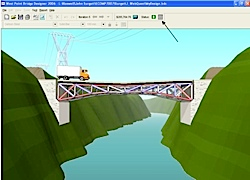
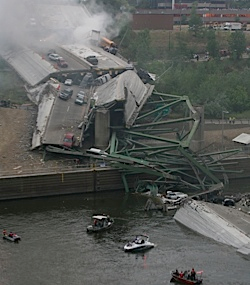
Running a Business
A computer model of a business can be used to help predict future profits.
If the workings of a business can be modelled accurately, in particular the financial systems, then these models can be used to make predictions. The models are used to help answer ‘what if …?’ type questions, e.g. “What if we decrease the workforce by 15%? Will our profits increase or decrease?”
Based on the answers that the model gives, the managers of the business can make decisions.
If the workings of a business can be modelled accurately, in particular the financial systems, then these models can be used to make predictions. The models are used to help answer ‘what if …?’ type questions, e.g. “What if we decrease the workforce by 15%? Will our profits increase or decrease?”
Based on the answers that the model gives, the managers of the business can make decisions.
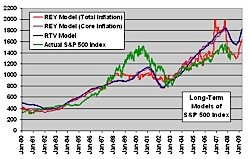
Spreadsheets are often used to model the financial systems of a business.
Training Pilots to Fly an Airplane
Trainee pilots have many hours of lessons in flight simulators before being allowed to fly a real airplane.
Flight simulators behave almost exactly like real airplanes since they are controlled by a computer with a very accurate and realistic model of the airplane. The main difference is that the simulator can’t actually crash!
Pilots can make mistakes without putting anyone’s life at risk.
Flight simulators can provide a pilot with any number of highly realistic flying situations: storms, engine failures, low cloud hiding the runway, etc.
The experience that pilots gain whilst using the simulator means that when they eventually start flying real airplanes, they already have many of the required skills.
Flight simulators behave almost exactly like real airplanes since they are controlled by a computer with a very accurate and realistic model of the airplane. The main difference is that the simulator can’t actually crash!
Pilots can make mistakes without putting anyone’s life at risk.
Flight simulators can provide a pilot with any number of highly realistic flying situations: storms, engine failures, low cloud hiding the runway, etc.
The experience that pilots gain whilst using the simulator means that when they eventually start flying real airplanes, they already have many of the required skills.
There are also car simulators that are used to help train learner drivers, and also ship simulators to help ship captains learn how to navigate and manoeuvre large ships such as oil tankers.
